We all at some point in time might’ve thought about hacking our neighbor’s WiFi and using their internet sneakily. Like really it’s kinda fun getting free WiFi right? Especially in the range of our comfy private room, nothing would beat that. Or maybe you got to take control of your own WiFi whose password you can’t remember. Either way, do you think you could actually do that if you knew the technical operations? Assuming you know a thing or two about the technicalities of your smartphone and computers. Today’s article is going to be very interesting for you as we’re here to provide some actual methods on how to hack WiFi password which might just do the trick if things are how they should be and you do them right. Anyway, let’s understand the nitty-gritty details about how such operations actually take place. So, continue reading to know how to hack WiFi password using Android phone or PC.
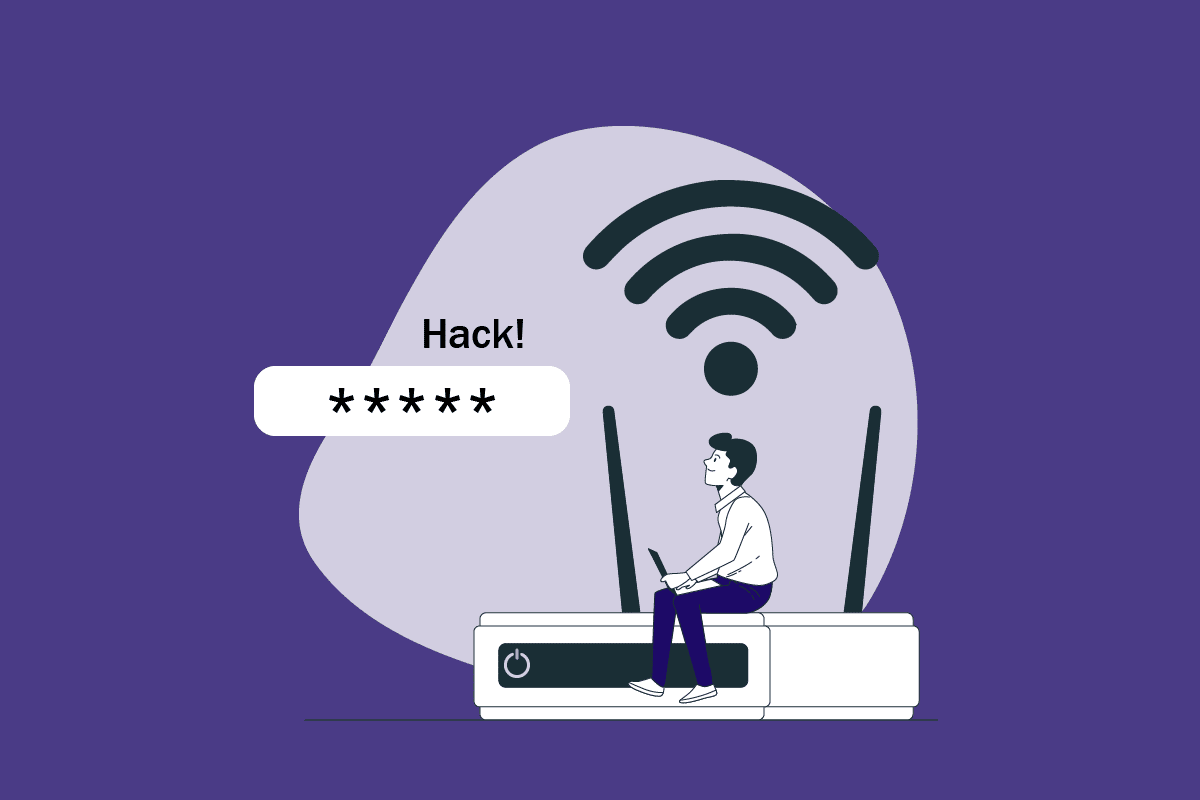
How to Hack WiFi Password
Wireless Fidelity is an alternative name for Wifi. WiFi is a common technology that may be found on computers, mobile devices, and other places that enable WiFi. In order to connect wirelessly to a network, another computer, or a mobile device, one must use WiFi networking technology. In WiFi, data is sent via a circular radio frequency spectrum. With no wires or connections required, WiFi functions like a local area network. WiFi local area network is known as WLAN. Communication is governed by IEEE 802.11. Physical Data Link Layer (PDLL) is a technology that WiFi uses to function. All contemporary computer gadgets, including digital cameras, smart TVs, mobile phones, and laptops, have WiFi capabilities. A 2.4 GHz bandwidth is the standard for all devices. WiFi comes in a variety of forms or standards, as was already noted. The standards’ names are defined here:
- WiFi-1 (802.11b, released in 1999) (802.11b, launched in 1999) – This version features a 2.4 GHz frequency band connection speed of 2 Mb/s to 11 Mb/s.
- In 1999, WiFi-2 (802.11a) was introduced. The previous version, 802.11a, which offers up to 54 Mb/s connection speed across the 5 GHz band, was launched after a month.
- In 2003, WiFi-3 (802.11g) was introduced. In this edition, the 2.4 GHz speed was increased to 54 to 108 Mb/s.
- Launched in 2004, 802.11i. This is comparable to 802.11g, except this version just adds a security feature.
- In 2004, 802.11e was released. Only Voice over Wireless LAN and multimedia streaming are supported. Otherwise, it is the same as 802.11g.
- 2009 saw the release of WiFi-4 (802.11n). This model supports both 2.4 GHz and 5 GHz wireless bands and offers speeds of up to 72 to 600 Mb/s.
- 2014 saw the release of WiFi 5 (802.11ac). It provides a 5 GHz band speed of 1733 Mb/s.
An electromagnetic wave-based wireless communication technology called WiFi transmits networks. Radiofrequency is used in WiFi since there are different types of electromagnetic waves dependent on their frequency. The following elements make up how wifi works:
- Host network: The router’s primary host network, also known as the base station network or Ethernet (802.3) connection, is where it obtains its network connection.
- Access point or router: Network bridges join wired and wireless networks. They are often referred to as access points or routers. Accepting a wired Ethernet connection, the wired connection is transformed into a wireless connection, which is then broadcast via radio waves.
- Accessing Tool: Information may be accessed in a variety of ways. We connect to WiFi and browse the web via WiFi from our phones, computer, and other devices.
WiFi, often known as wireless LAN, is referred to as:
- Service set identifier (SSID) which is basically a string of 32 characters is used to identify and separate WiFi networks from one another. Every device attempts to communicate with the same SSID (Service Set Identifier). The name of the wireless network is abbreviated as SSID, which stands for Service Set Identifier.
- WiFi Protected Access-Pre-Shared Key (WPA-PSK) is a program developed by the WiFi Alliance Authority to secure wireless networks. There are three types of WPA: WPA, WPA2, and WPA3. This is a WiFi signal encryption technique to block unauthorized users.
- WiFi uses ad hoc networks to transport information. It’s a wireless mesh network, which is a point-to-point system without an interface.
WPA authenticates users using a 256-bit pre-shared key or passphrase. Short passwords are susceptible to dictionary attacks and other password-cracking techniques. To breach WPA keys, utilize the following WiFi hacker internet resources:
- CowPatty: Using a brute force approach, this WiFi password cracking program can break pre-shared keys (PSK).
- Cain and Abel: You may decode capture files from other sniffer applications like Wireshark with this WiFi hacker for PC utility. WEP or WPA-PSK encoded frames might be present in the capture files.
So now that we know about all the important stuff about WiFi. Let’s proceed to the methods of hacking them.
Method 1: Through Windows Command Prompt
One of the basic ways how to hack WiFi passwords if you were already connected to them once, is possible through your very own laptop or desktop. To do so, follow the steps below:
1. Press the Start menu on your PC keyboard and type Command Prompt in the search bar. Click on Run as administrator.
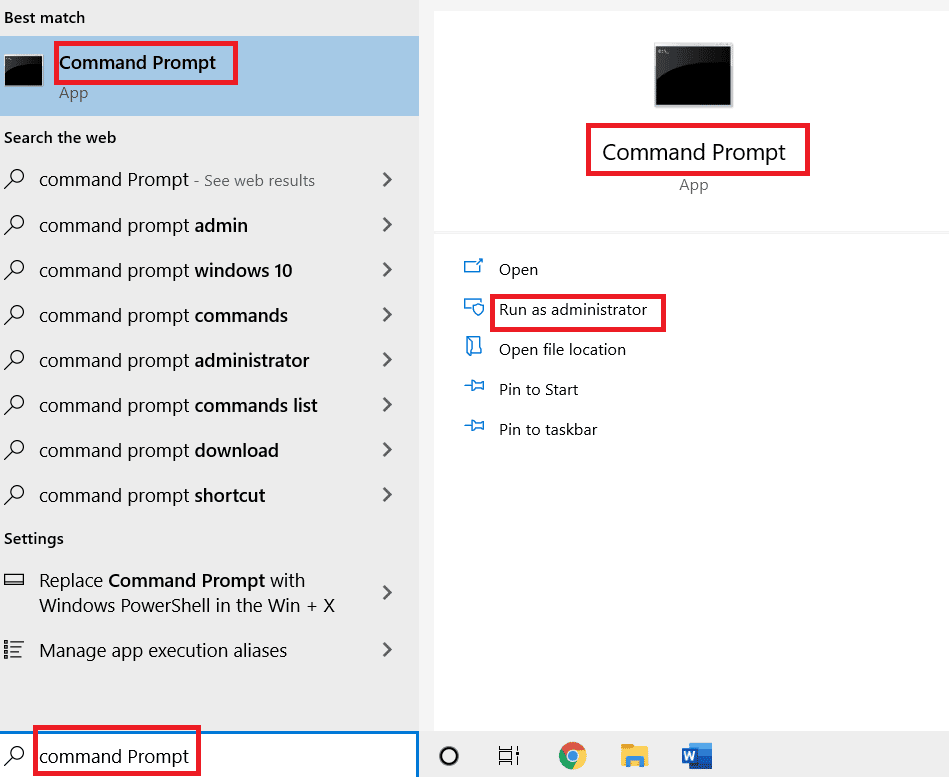
2. In the Command Prompt window, type the given command and press Enter key.
netsh wlan show profile
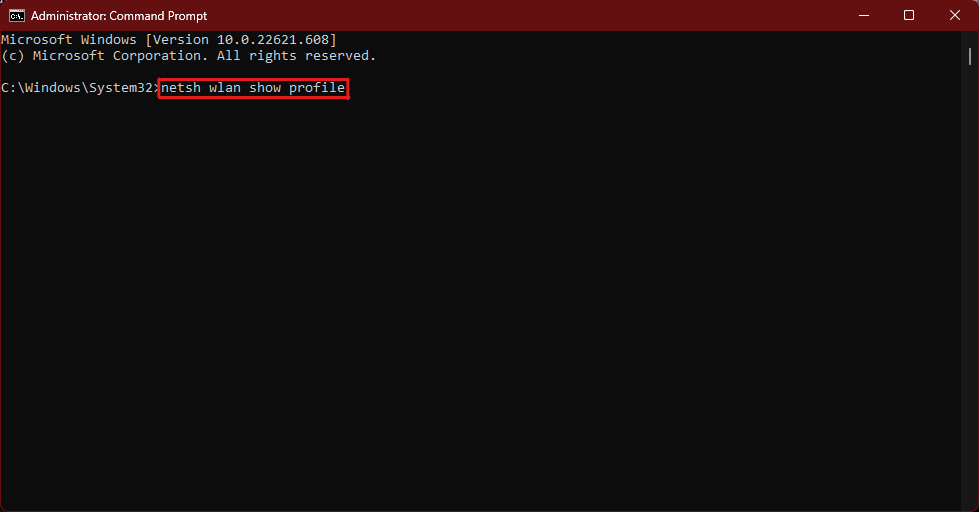
3. This will lay out all the saved Wifi connections under the User profile heading that your PC had connected to till date, locate the name of the Wifi you want password for and paste the following command and hit Enter key.
netsh wlan show profile name="XXXXXXXX" key=clear
Note: Insert the Xs with the name of your Wifi, FD-63 in my case is considered as an example.
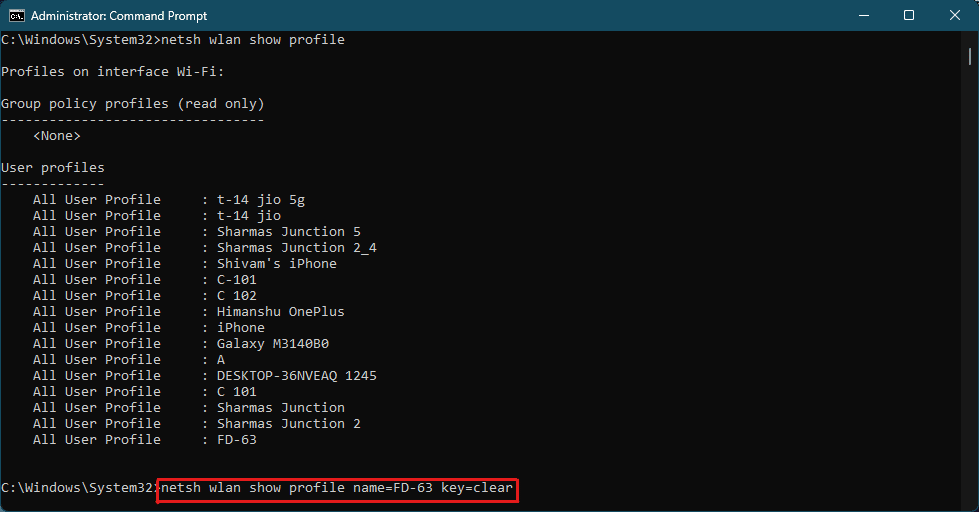
4. All the details about the wireless connection including its password will be displayed under the Security settings and the password will be beside the Key content section.
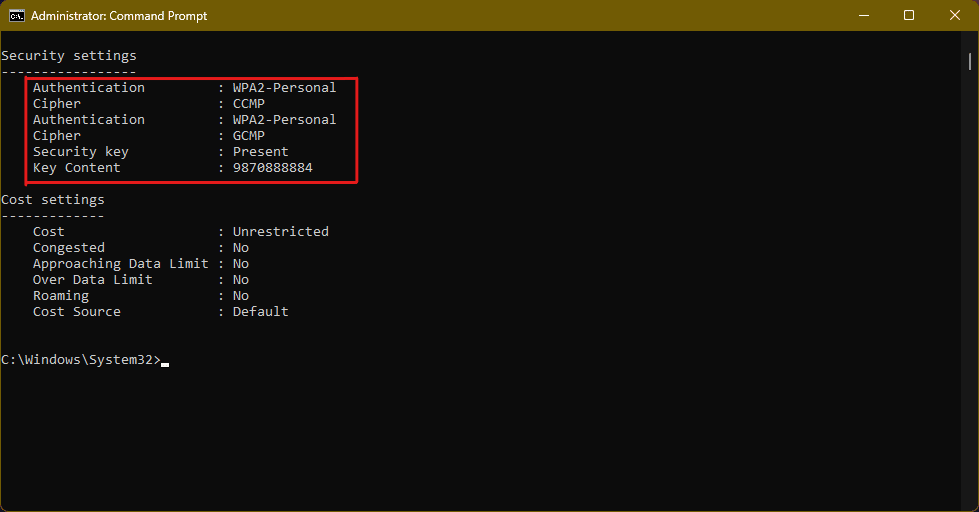
5. This way the password can be gathered from a previously connected Wifi.
Also Read: 18 Best Tools for Hacking
Method 2: Through Cain and Abel Application (On PC)
By using the Cain and Abel application on your PC whose download link is mentioned above you can hack the passwords. To understand how to hack Wifi password through this method, follow the steps below:
1. Open the downloaded application.
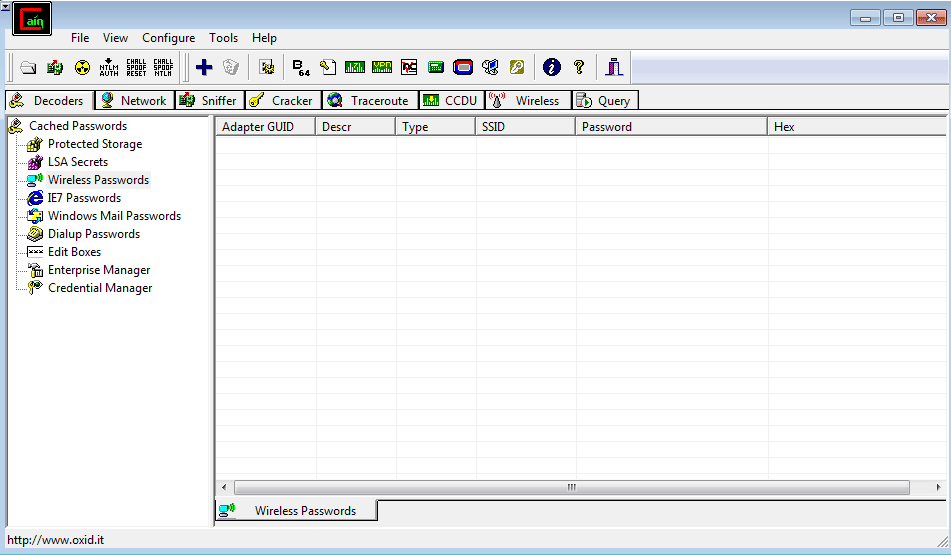
2. Click on the Decoders tab on the top left of the tab list.
3. Now, click on the Wireless Passwords options from the left panel and click on the blue + icon from the options above the tab list.
4. After this, all the wireless networks your PC has connected with previously will show up in the front panel where the name of your Wifi will be present somewhere under the SSID column and its password will be just beside it under the Password column.
5. Locate your required Wifi and gather its password.
Method 3: Hack Passwords of WPA2 WPS WiFi Routers (On Android)
This is another Wifi hacking operation that can be possible through Bcmon and Reaver Android apps. But you must have a rooted phone. So if not, do so to follow this method. Also, be sure that your phones possess the Broadcom bcm4329 or bcm4330 chipsets that are present in Samsung Galaxy S1/S2, HTC Desire HD, Nexus 7, Nexus 1, etc. Let’s proceed to the steps as follows to hack WiFi password using Android phone.
1. Open the Bcmon app on your phone and tap on the monitor mode option.
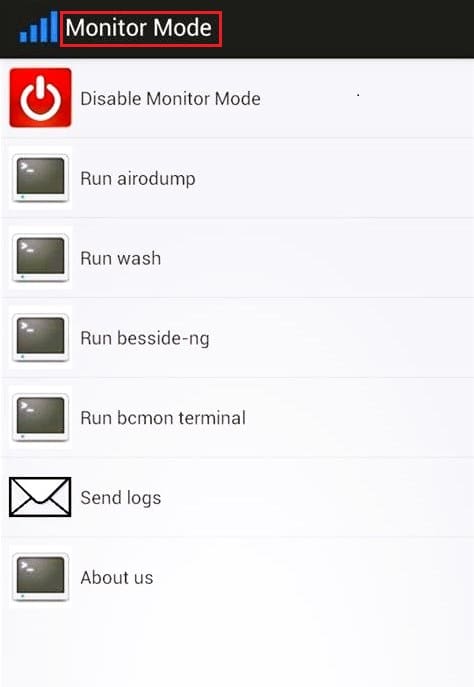
2. Keep the app running in the background and again go to your phone’s menu and launch the Reaver app.
3. Here a popup will come up asking to confirm that you aren’t using the app for any illegal activity, tap on the Confirm option and proceed.
4. Now tap on the APN which is the network you want to hack.
Note: If you don’t see the desired networks, switch back to the Bcmon app and check whether the monitor mode you tapped on in the first step is still active, if not, tap on it again to activate it.
5. Tap on Settings in the Reaver app and select the box beside the Automatic Advanced setting option.
6. Now tap on the start attack option on the main screen of the app to hack the Wifi.
7. The WiFi will probably get hacked in 2-10 hours.
Also Read: How To Quickly Hack Xfinity WiFi Hotspots?
Method 4: Through WPSApp (On Android)
The WPSApp is another Wifi hacking app that helps in hacking any password nearby by providing an 8-digit PIN to the networks. It usually provides sure shot crack for [WPA-PSK]+[WPS] encrypted Wifis (shown by green tick mark beside them) and various trial and error PINs for [WPA2-PSK]+[WPS] type of security (shown by white question marks beside them) while no hack for [WPA2-PSK] advanced security Wifis (red cross beside them). To understand how to hack Wifi password using Android phone through this app, follow the steps below:
1. Open the app and search for the Wifi networks in your phone’s range by pressing on the two arrows on the top right of the phone screen.
Note: In this step, the app will pop-up asking for your phone’s Wifi access and location access. Do grant the permission according to your preferences from the options that can be changed in the future by going to the phone’s Settings for the app.
![]()
2. After the listing of the Wifi connections appears, tap on your desired Wifi network you want to hack which should be marked by a tick or a question mark icon beside it.
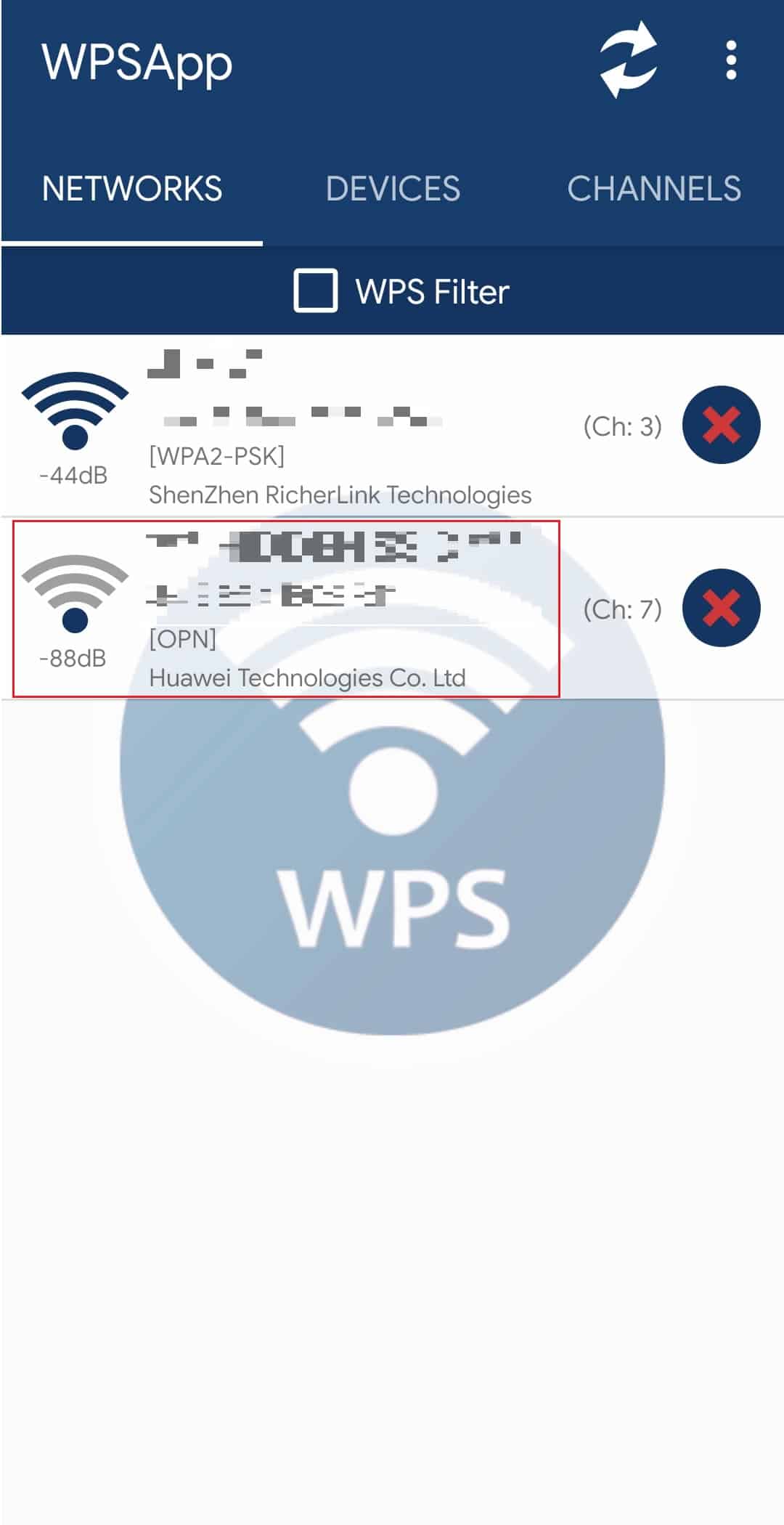
3. Now tap on the CONNECT WITH KEY option for the Wifi connection and wait for some seconds.
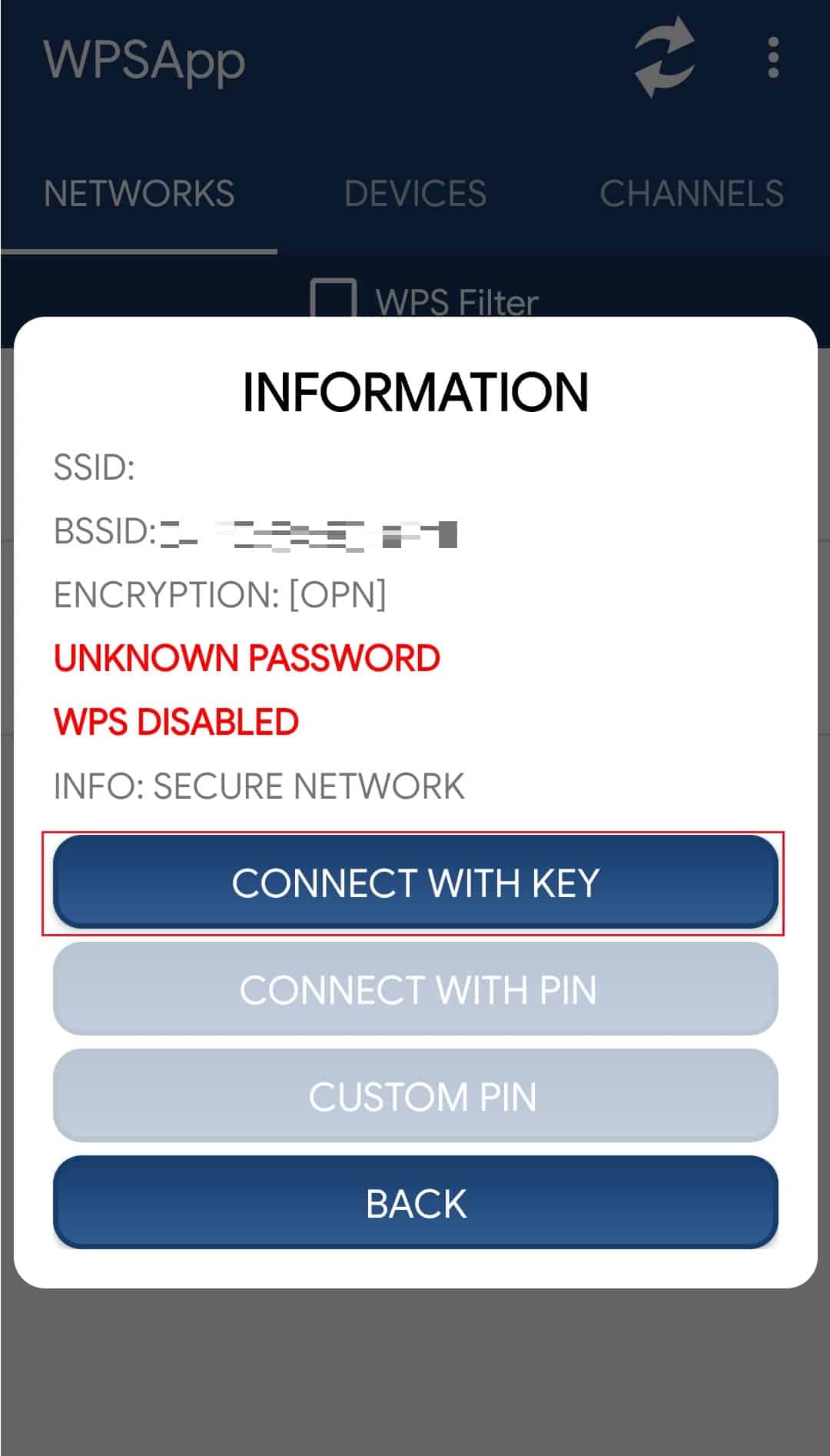
4. The app will display the network’s password automatically in some time.
Method 5: Through AndroDumper App (On Android)
You can also hack Wifi passwords through the AndroDumpper app which had been one of the famous apps for this operation. To do so, download the app and follow the steps below:
1. Turn on your phone’s Wifi and launch the AndroidDumpper app.
2. Tap on the two arrows on the top right of the app to refresh the search for nearby Wifi devices.
3. Find your desired Wifi and tap on the TRY CONNECT option to start hacking it.
4. The app will hack the network faster and pretty successfully if the password is less complex.
Method 6: Through WIFI WPS WPA TESTER App (On Android)
A good and effective hacking can be possible through the Wi-Fi WPS WPA TESTER app that can hack routers with outdated security and probably a WPS router. The app comes with a free and premium version separately. To get effective results, you should go with the premium version which is probably very cheap. To understand how to hack Wifi password using Android phone with this app, download it through the link above and follow the steps below:
1. Open the Wi-Fi WPS WPA TESTER app and turn on your phone’s Wifi.
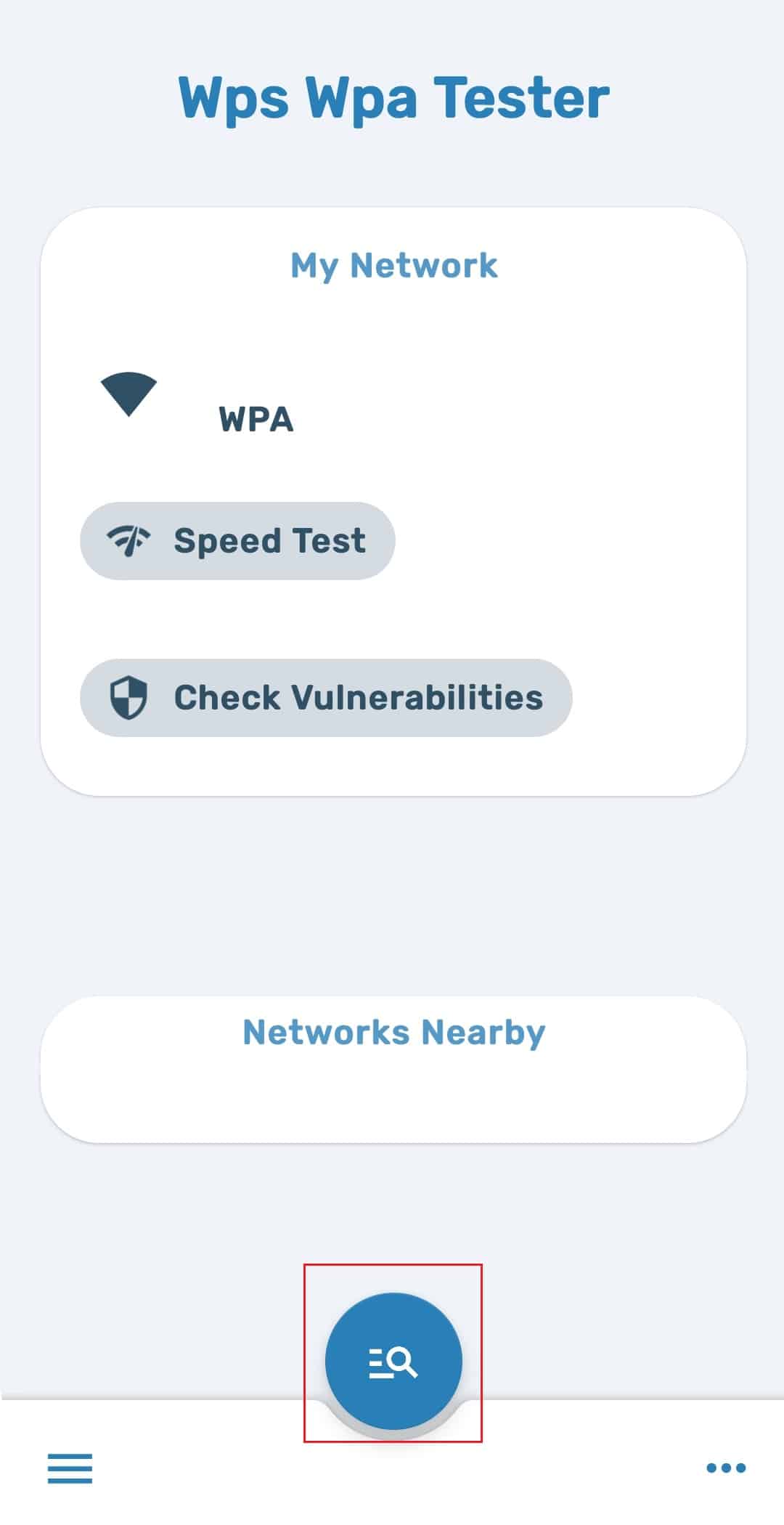
2. Tap on the Scan option and search for your desired Wifi from the list.
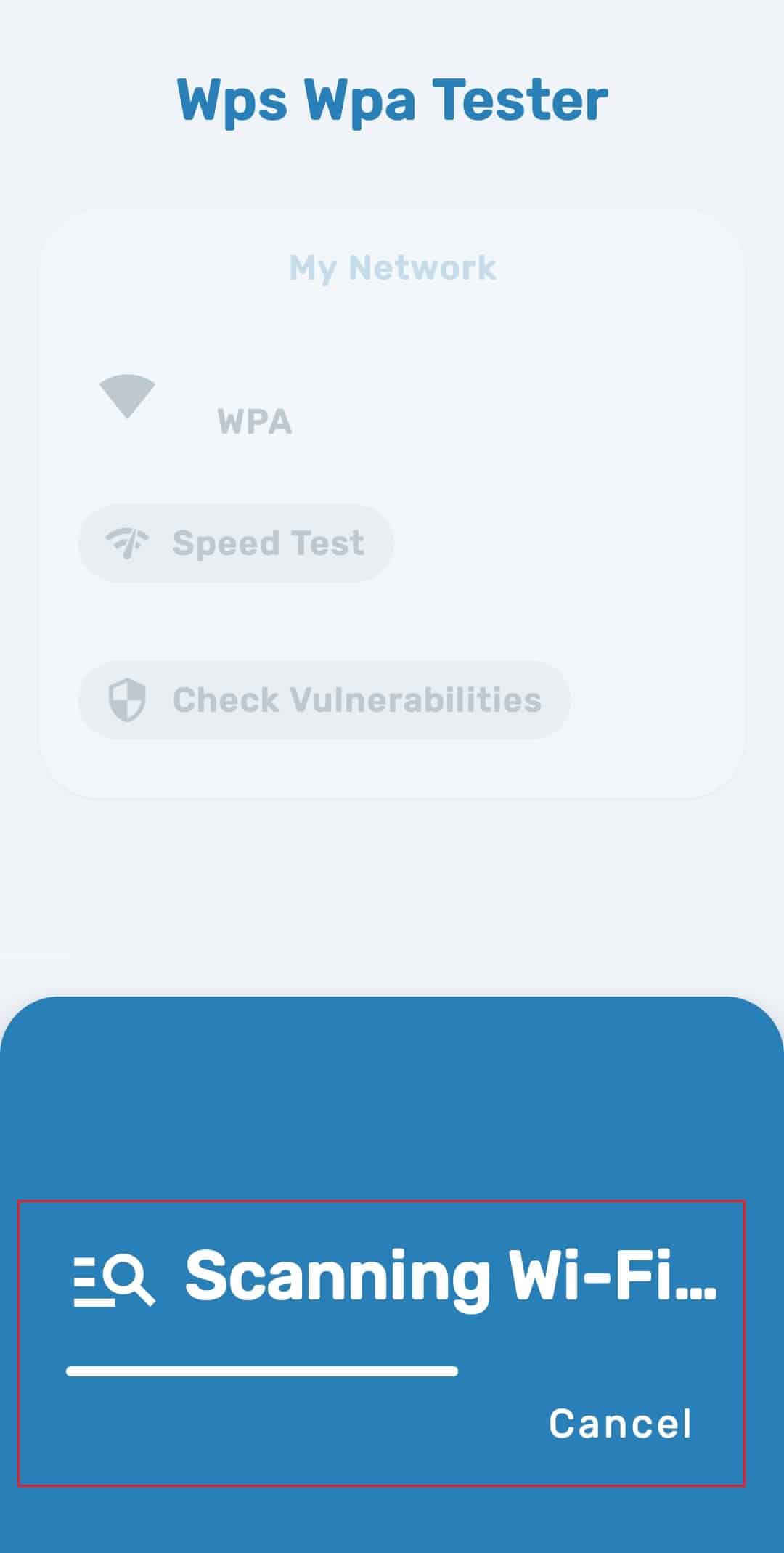
3. Tap on your desired Wifi and then tap on the Password option on the bottom right to hack.
4. The app will detect and provide the security status of the connection, if the security type is vulnerable, the password will show up.
Also Read: How to Hack Any Game on Android
Method 7: Through WiFi WPS Connect App
To hack all the WPS-secured WiFis, this app WiFi WPS Connect is one app of its kind. The app can bypass WPS security without any password and mostly works good on rooted phones. To hack through this app, download it from the link provided above and follow the steps below:
1. Turn on the WiFi and open the WiFi WPS Connect app.
2. Tap on the two arrows on the top right of the app to refresh the search for nearby connections.
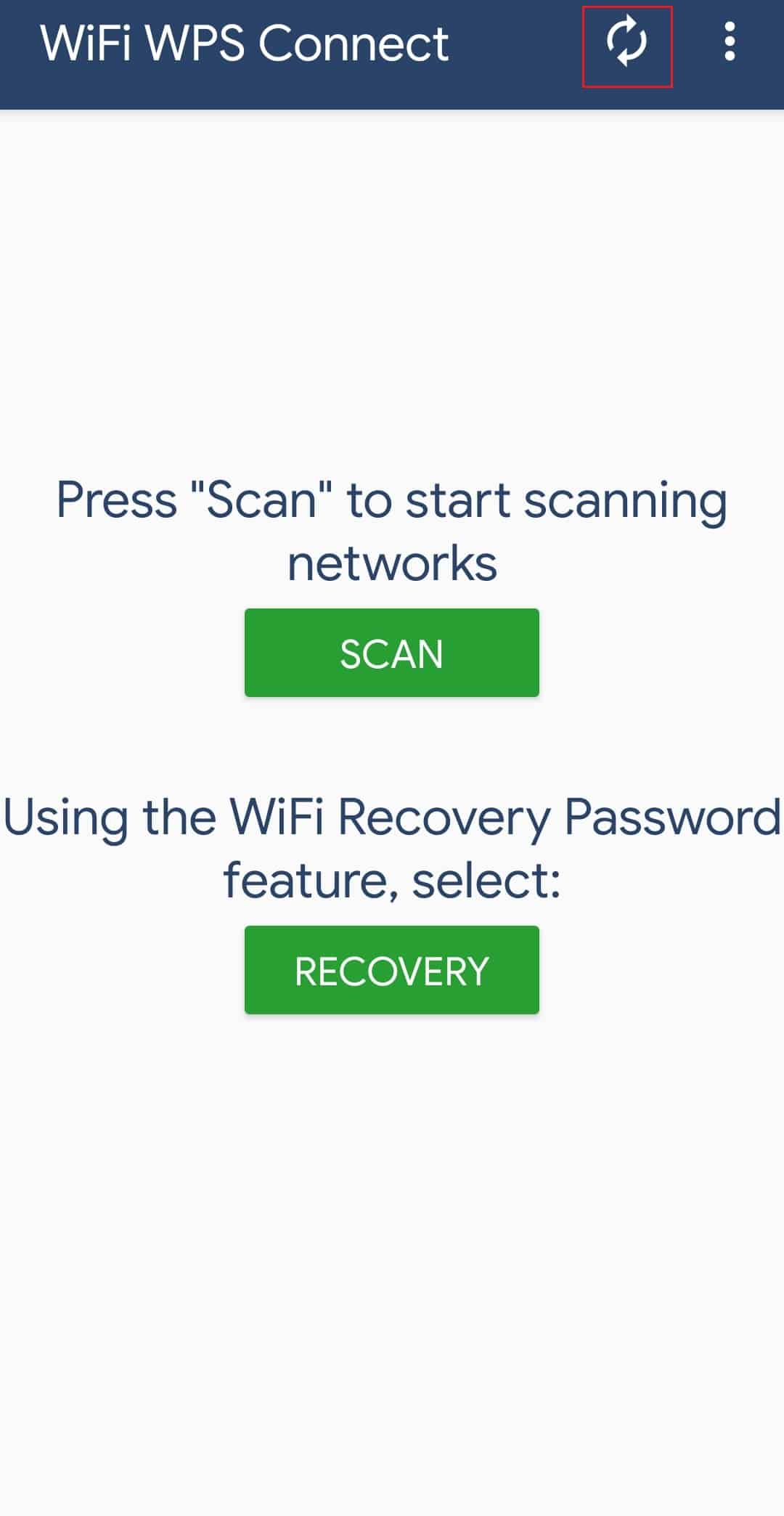
3. After successfully loading all the nearby devices and their basic details below them, tap on the desired WiFi you want to hack.
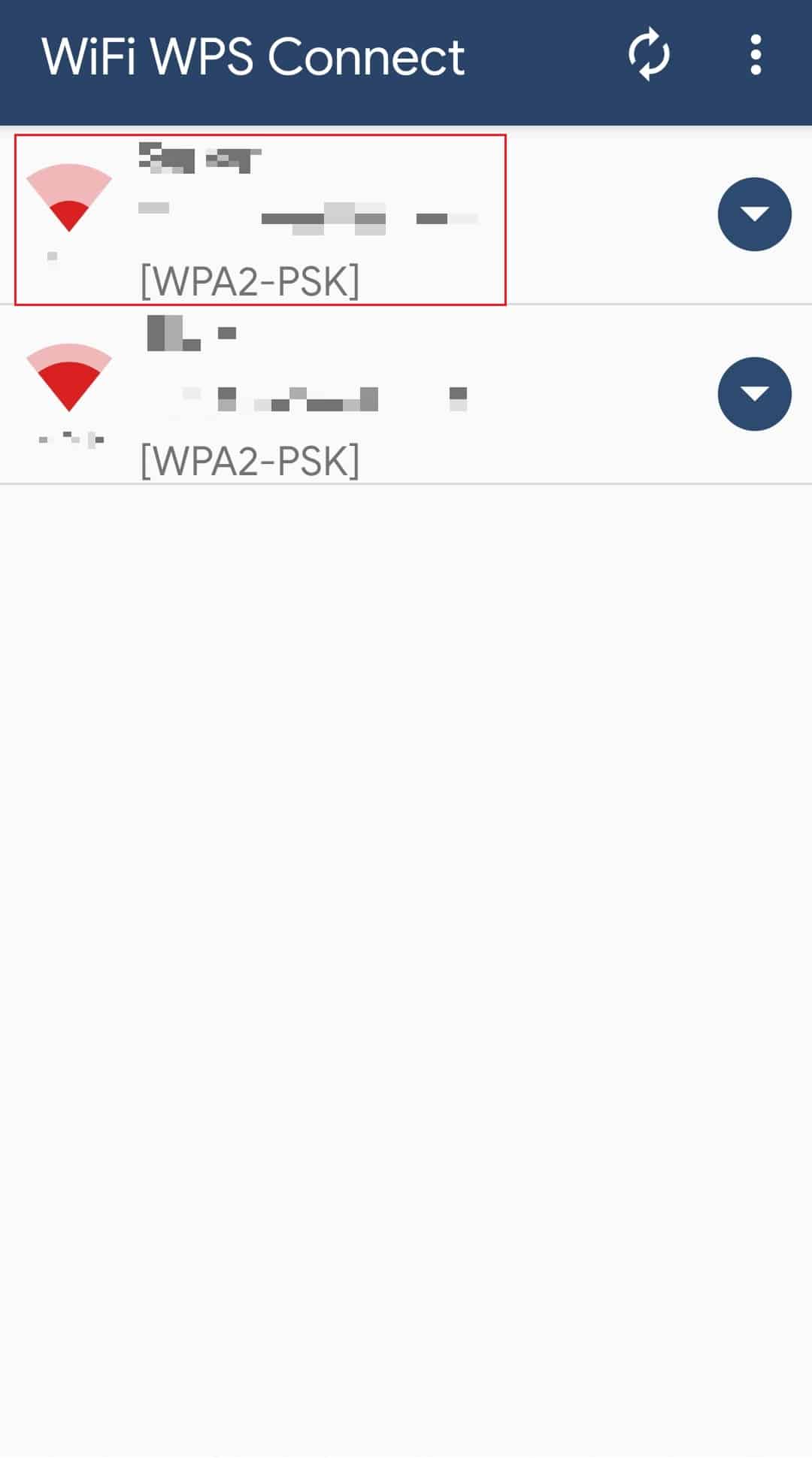
4. A pop-up will appear about the Wifi security and CONNECT WITH PIN, CONNECT WITH KEY and other options below it.
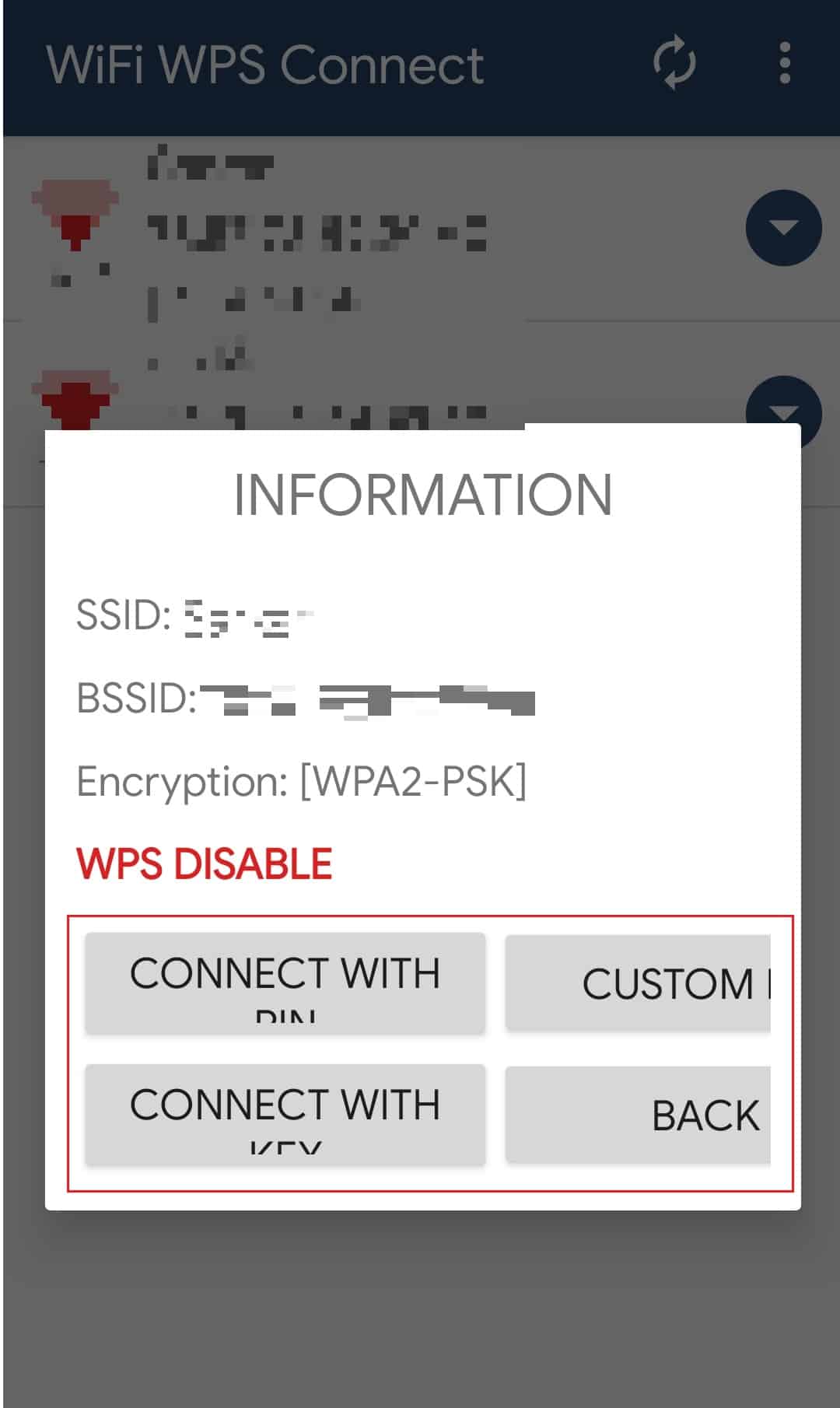
5. Try one by one by clicking on both options and the WiFi password will appear in some minutes.
Recommended:
Above were some of the methods about how to hack WiFi password through various apps and programs. Remember, we don’t promote the misuse of any of these methods and the above should be done under expert surveillance or for study purposes. Any other complexities are solely your responsibility. Hope this article on how to hack WiFi password using Android phone or PC helped you in some way. Do share your feedback in the comment section below, and also do share your experiences and which app and method worked for you. Keep reading and we’ll see you in another article with another topic.

